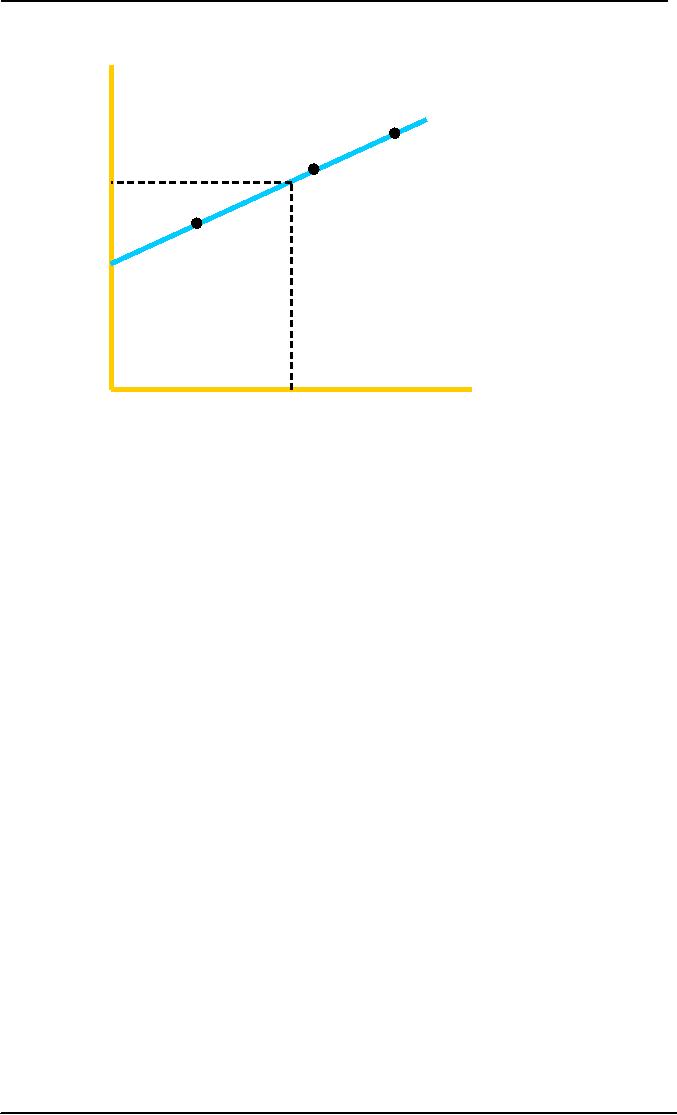 |
Exchange-Traded Funds (ETFs) |
| << What Is An Investment Company |
| COMMON STOCK: ANALYSIS AND STRATEGY >> |

Investment
Analysis & Portfolio Management
(FIN630)
VU
Lesson
# 21
INDIRECT
INVESTING Contd...
Exchange-Traded
Funds (ETFs):
A new
investing trend of increasing
importance is the exchange-traded
funds (ETFs). These
new
financial assets have some
characteristics of index mutual
funds, closed-end funds,
and
even
individual stocks.
An
ETF is a basket of stocks that
tracks a particular sector, investment
style, geographical
area,
or the market as a whole. As of
August 2002, there were
approximately 125 ETFs,
with
perhaps $100 billion in assets.
Although this, is tiny compared to
the assets in mutual
funds,
the growth rate in assets
for ETFs has been
impressive, as more and more
investors
discover
them.
Like
an index mutual fund, ETFs
to date are passive
portfolios (although actively
managed
ETFs
are under consideration)
that simply hold a basket of
stocks. Unlike a mutual
fund,
however,
and like a stock or a closed-end fund, an
ETF trades on an exchange
throughout
the
day, and can be bought on margin and
sold short. And like a
closed-end fund, ETFs
can
trade at
discounts and premiums, but to
date, the differences
between NAV and price
have
been
tiny, and this will almost
certainly continue to be the
case because of the
unique
mechanisms
that were developed to
create and liquidate ETF
shares.
Let's
consider some ETFs. Probably
the best-known ETF is the
"Spider" (Standard &
Poor's
Depositary
Receipts, SPDRs), which was introduced in 1993 to
reflect the S&P 500
Index.
SPDRs
are traded on the Amex, and
priced continuously during
the day Other ETFs
include
"Diamonds"
(the DJIA), "Cubes"
(Nasdaq-100 Index Tracking
Stock), and "Shares" (S&P
500 as
well as other S&P indexes
for small cap, mid-cap, and
growth and value
indexes,
various
Russell Indexes, various Dow
Jones Sector funds, and various
country funds), there
are
77 different Share ETFs.
Vanguard, the investment
company, created VIPERs to
track
the
entire stock market.
The
Required Rate of
Return:
The
required rate of return was the
discount rate for valuing
common stocks. The
required
rate of
return for a common stock,
or any security, is defined as
the minimum expected rate
of
return needed to induce an
investor to purchase it, is,
given its risk, a security
must offer
some
minimum expected return before par
investor can be persuaded to buy
it.
The
CAPM provides investors with
a method of actually calculating a
required (expected)
rate of
return for a stock, an
industry, or the market as a
Our interest, here is to think of
the
required
rate of return on an overall basis as it
after the strategies that
investors employ and
the
management of their portfolios.
|
What
do Investors require (expect)
when they invest? First of
all, investor's can earn a
riskless
rate of return by investing in riskless
assets such as Treasury
bills. This nominal
risk-free
rate of return is designated RF
throughout this text. It consists of a
real risk-free
rate of
interest and an expected inflation
premium. In summary, as an
approximation:
Risk-free
rate of .return =Real risk =
free value f Expected
Inflation
136

Investment
Analysis & Portfolio Management
(FIN630)
VU
In
addition to the risk-free rate of
return available from
riskless assets, rational
risk-averse
investors
purchasing a risky asset
expect to be compensated for
this additional risk.
Therefore,
risky assets must offer
risk premiums above and beyond
the riskless rate of
return
and the greater, the risk of
the asset, the greater the
promised risk premium must
be.
The
risk premium should reflect
all the uncertainty involved
in the asset. Thinking risk
in
terms
of its traditional sources, such
components as the business
risk and the financial
risk
of a
corporation would certainly
contribute to the risk
premium demanded by investor
for
purchasing
the common stock of the
corporation. After all, the
risk to the investor is
the
expected
income (return) will not be
realized because of unforeseen
events.
The
particular business that a
company is in will significantly affect
the risk to the
investor.
One
has only to look at the
textile and steel industries in the
last few years to
appreciate
business
risk which leads to an
understanding of why industry analysis is
important. And
the
financial decisions that a firm
makes (or fails to make)
also affect the riskiness of
the
stock.
Understanding
the Required Rate of
Return:
The
required rate of return any
investment opportunity can be expressed
as Equation. This
is,
in effect, CAPM
model.
Required
rate of return = Risk- free
rate + Risk
premium
It is
important to note that there
are many financial assets
and therefore many
different
required
rates of return. The average
required rate of return on bonds is
different from
average
required rate of return on preferred
stocks, and both are different
from the typical
required
rates of return for common
stocks, warrants, or puts and calls.
Furthermore
within
a particular asset category
such as common stocks, there
are many required
rates
of
return. Common stocks cover a
relatively wide range of risk
from conservative
utility
stocks to
small, risky high-technology
stocks.
137

Investment
Analysis & Portfolio Management
(FIN630)
VU
SML
E(R)
A
kM
B
C
kRF
0
0.5
1.0
1.5
2.0
BetaM
The
trade-off between the
required rate of return and risk is
linear arid upward sloping
that
is,
the required rate of return
increases as the risk,
measured by beta, increases;
the stock
market
taken as a whole has a beta
of 1.0, indicated by point M.
The required rate of
return
for,
all stocks is therefore kM. A stock with a beta
lower than 1.0 has a
required rate of
return
below kM, because its
risk (beta) is less than
that of the market. On the
other hand, a
stock
with a beta greater than 1.0
has a required rate of return greater
than that of the
market.
It is also
important to be aware that the
level of required rates of
return changes over
time.
For
example, required rates t of
return change as inflationary
expectations change, because
the
inflation premium is a component of
the risk-free rate of return,
which in turn is a
component
of the requited rate of return.
The level also changes as
the risk premiums
change.
Investor pessimism will increase the
risk premium and the
required rate investor
optimism
lowers both.
138
Table of Contents:
- INTRODUCTION OF INVESTMENT
- THE ROLE OF THE CAPITAL MARKETS
- THE NASDAQ STOCK MARKET
- Blue Chip Stocks, Income Stock, Cyclical Stocks, Defensive Stocks
- MARKET MECHANICS
- FUNDAMENTAL STOCK ANALYSIS
- BEYOND FUNDAMENTAL ANALYSIS
- What is Technical Analysis
- Indicators with Economic Justification
- Dow Theory
- VALUATION PHILOSOPHIES
- Ratio Analysis
- INVESTMENT RATIOS
- Bottom-Up, Top-Down Approach to Fundamental Analysis
- The Industry Life Cycle
- COMPANY ANALYSIS
- Analyzing a Company’s Profitability
- Objective of Financial Statements
- RESEARCH PHILOSPHY
- What Is An Investment Company
- Exchange-Traded Funds (ETFs)
- COMMON STOCK: ANALYSIS AND STRATEGY
- THE EFFICIENT MARKET HYPOTHESIS (EMH)
- Behavioral Finance
- MARKET INDEXES
- POPULAR INDEXES
- BOND PRINCIPLES
- BOND PRICING AND RETURNS
- Accrued Interest
- BOND RISKS
- UNDERSTANDING RISK AND RETURN
- TYPES & SOURCES OF RISK
- Measuring Risk
- ANALYZING PORTFOLIO RISK
- Building a Portfolio Using Markowitz Principles
- Capital Market Theory: Assumptions, The Separation Theorem
- Risk-Free Asset, Estimating the SML
- Formulate an Appropriate Investment Policy
- EVALUATION OF INVESTMENT PERFORMANCE
- THE ROLE OF DERIVATIVE ASSETS
- THE FUTURES MARKET
- Using Futures Contracts: Hedgers
- Financial Futures: Short Hedges, Long Hedges
- Risk Management, Risk Transfer, Financial Leverage
- OVERVIEW